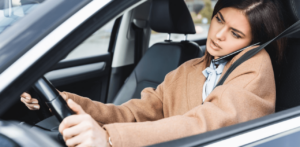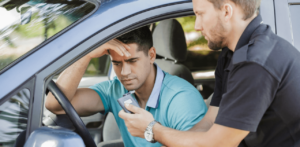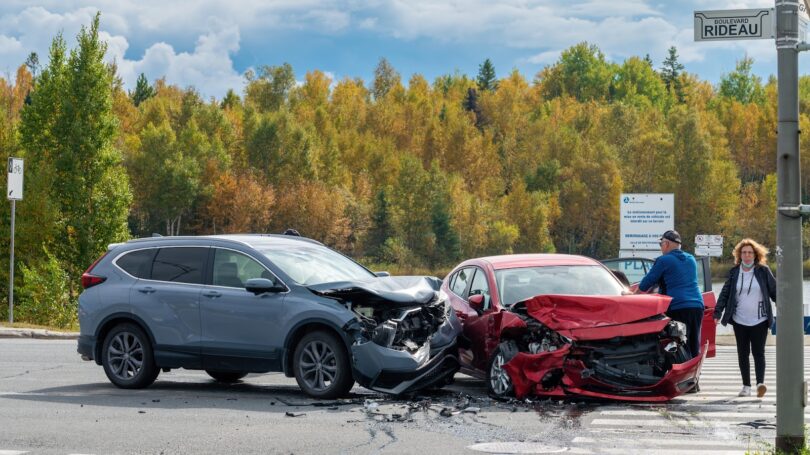Car accidents can happen in a split second, but the impact can last a lifetime. In Nevada, especially in busy areas like Las Vegas, many car accidents occur daily, leaving victims with serious injuries and a long road to recovery. The Nevada Department of Public Safety and Transportation’s Zero Fatalities program reported 416 fatalities in 2022 due to car accidents. The primary causes identified for these incidents were impaired driving and speeding.
Understanding the main causes of these accidents can help drivers avoid them, but it’s not always that simple. From distracted drivers to drunk driving, there are a variety of reasons why crashes happen. Sometimes, it’s a matter of someone not paying attention; other times, it’s more reckless behavior. These accidents lead to severe injuries property damage, and, in many cases, personal injury claims can quickly become complicated.
If you or a loved one has been involved in a car accident, having a trusted Las Vegas car accident lawyer on your side can make a world of difference. Temple Injury Law knows the ins and outs of personal injury law and is here to help you get back on your feet.
In this blog, we will explore the top 10 causes of car accidents in Nevada. We will also learn how car accident attorneys help affected individuals and hold those responsible for accidents accountable.
1. Speeding
Drivers who engage in negligent behavior, such as speeding or ignoring traffic signals, also put themselves and others at risk. According to the National Highway Traffic Safety Administration (NHTSA), speeding was a significant factor in road fatalities, leading to the death of 12,330 individuals. Speeding is classified based on various behaviors, including driving too fast for the conditions, exceeding the posted speed limit, or engaging in racing activities.
2. Reckless Driving
Nevada’s roadways witness the devastating consequences of reckless and aggressive driving. This destructive behavior often escalates into dangerous situations with compromised traffic safety, leading to car accidents. Here are some common examples of reckless driving:
- Tailgating: Following the vehicle in front too closely, leaving minimal reaction time in case of sudden stops.
- Weaving in and out of Traffic: Making frequent and abrupt lane changes without signaling or checking blind spots.
- Aggressive Overtaking: Passing other vehicles aggressively or unsafely, such as on the shoulder or in no-passing zones.
- Failure to Yield: Ignoring right-of-way rules and failing to yield to other drivers or pedestrians when required.
- Reckless Lane Changes: Changing lanes abruptly and without proper signaling, potentially causing collisions with other vehicles.
3. Distracted Driving

Distracted driving is one of the primary reasons for vehicle collisions in Nevada and across the US. It might seem harmless to quickly check a text message or adjust your GPS while behind the wheel, but even momentary distractions can have devastating consequences.
Distracted driving contributes to around 8.5% of fatal accidents annually. That’s nearly one in ten deaths on our roads due directly to drivers not giving their full attention to the task at hand.
Common Distractions Leading To Accidents
Car accidents occur when distractions happen or every time you lose focus on driving. Some common distractions include:
- Mobile Phones: Texting, calling, or using smartphones while driving, walking, or cycling can divert attention and increase the risk of accidents.
- In-Car Distractions: Adjusting the radio, GPS, or other in-car technology, eating, or interacting with passengers can take attention away from the road.
- Daydreaming: Failing to stay mentally engaged in the driving task, also known as “zoning out,” can result in delayed reactions to hazards.
- Emotional Distractions: Strong emotions, such as anger, sadness, or stress, can affect cognitive function and decision-making, increasing the risk of accidents.
- Unfamiliar Routes or Environments: Handling an unfamiliar area can be distracting and increase the chances of missing essential cues or signs.
4. Drowsy Driving
Drowsy driving occurs when a person operates a vehicle while fatigued or excessively sleepy. This state of reduced alertness and impaired reaction time can significantly increase the risk of accidents.
The Centers for Disease Control and Prevention (CDC) reported that in 2020, there were 633 deaths attributed to drowsy driving based on police reports. However, it is emphasized that these numbers likely underestimate the actual impact, as over 6,000 fatal crashes each year may involve a drowsy driver. This suggests that drowsy driving may be more prevalent and contribute to a higher number of fatalities.
5. Driving Under the Influence (DUI)

Nevada experiences a notable amount of traffic fatalities due to impaired driving or drunk driving. Due to alcohol impairment, drunk drivers not only put their own lives at risk but also pose a serious threat to others on the road.
The Nevada Department of Motor Vehicles specifies that operating a vehicle with a blood alcohol content (BAC) at or above the legal limit is considered impaired driving. In Nevada, the BAC limit is 0.08, while commercial drivers have a limit of 0.04. These limits are not strict. Drivers can be charged with DUI even with lower BAC readings or if under the influence of controlled substances.
Refusing a breath, blood, or urine test directed by a police officer results in a minimum one-year driver’s license revocation. A blood sample can be drawn involuntarily in cases where a warrant or court order is obtained.
6. Adverse Weather Conditions
Nevada’s diverse climate often brings adverse weather conditions, which can contribute to motor vehicle accidents. Unexpected weather changes, such as sudden storms or dust devils, are not uncommon and can pose serious challenges for drivers on Nevada roads.
In particular, out-of-state drivers may find these conditions unfamiliar and struggle to manage safely. Motorists should adjust their driving behaviors according to the prevailing weather conditions, but unfortunately, this is not always the case.
Rainstorms make road surfaces slippery, reducing tire grip and increasing braking distances. Another is the foggy conditions that limit visibility significantly, making it difficult for drivers to see other vehicles or obstacles quickly. Snowy or icy roads are even more challenging due to reduced traction, which makes steering control difficult.
7. Road Infrastructure and Maintenance

The impact of poor road conditions on accidents can be significant and multifaceted. Here are some key ways in which inadequate road infrastructure and maintenance can contribute to accidents:
Surface Quality
Poorly maintained roads with potholes, cracks, or uneven surfaces can lead to a loss of vehicle control, especially at high speeds. Lack of proper drainage and road markings can accumulate water, leading to slippery conditions during rain, snow, or ice, increasing the risk of accidents.
Visibility and Signage
Missing or unclear road signs, traffic signals, and lane markings can confuse drivers and increase the likelihood of collisions. Overgrown vegetation or poorly placed infrastructure can obstruct visibility, making it difficult for drivers to anticipate hazards or make safe decisions.
Road Geometry
Poorly designed road curves without proper banking and signage can lead to accidents, especially if drivers underestimate the sharpness of a turn. Limited sight distance due to hills, curves, or obstacles can contribute to rear-end collisions or failures to yield.
Inadequate Lighting
Poorly lit roads at night can reduce visibility and increase the risk of accidents, especially in areas with high pedestrian traffic.
Lack of Pedestrian Infrastructure
Inadequate pedestrian infrastructure can result in unsafe road crossings, increasing the chances of accidents involving pedestrians.
8. Inexperienced Drivers
Inexperienced drivers are more likely to have accidents because they have not spent much time driving. They often lack the skills needed for safe driving and may hesitate or make poor decisions, leading to collisions. Not fully understanding traffic rules and hazards adds to their risk.
Moreover, these drivers may need help to handle unexpected situations and get distracted easily, making it hard to focus on the road. Their unfamiliarity with how vehicles respond and a tendency to take risks, like speeding, increase the chance of accidents.
Educational programs, supervised practice, and ongoing awareness efforts are essential to encouraging responsible driving habits among new drivers.
9. Running Red Lights and Stop Signs

Running red lights and stop signs seriously threatens road safety, endangering lives and causing catastrophic accidents. Disregarding these traffic signals disrupts traffic flow, leading to collisions and pedestrian injuries. The consequences are alarming in Nevada, with statistics revealing many accidents attributed to such violations.
According to research, nearly 700,000 police-reported motor vehicle crashes transpire at stop signs, with approximately one-third of these incidents resulting in injuries. The data highlights the pervasive impact of stop sign-related accidents, emphasizing the substantial risk of harm to individuals on the road.
10. Vehicle Defects and Malfunctions
Mechanical vehicle failures can contribute significantly to accidents, posing serious risks to the vehicle’s occupants and others on the road. Various vehicle components can experience defects or malfunctions, leading to potentially dangerous situations. Here are some ways in which mechanical failures contribute to accidents:
- Brake Failures: Malfunctioning or worn-out brake systems can reduce braking efficiency or complete failure. The inability to stop or slow down the vehicle in time can result in collisions, especially during emergencies.
- Tire Issues: Bald or under-inflated tires can lead to poor traction and handling, increasing the risk of skidding or losing control. Blowouts can occur, causing sudden and unexpected tire failure, leading to loss of control and potential accidents.
- Suspension and Steering Problems: Faulty suspension or steering components can make it difficult to maintain vehicle control. A sudden loss of steering control can lead to veering off the road or into oncoming traffic.
- Engine Failures: Engine malfunctions, such as sudden stalling or loss of power, can be hazardous, especially in high-speed traffic. Sudden acceleration due to a throttle malfunction can also contribute to accidents.
- Transmission Issues: Transmission failures can prevent gear shifts from working properly, leading to loss of acceleration or unexpected jerking movements. Sudden speed changes can also catch other drivers off guard, potentially causing collisions.
- Electrical System Failures: Malfunctions in the electrical system, including issues with lights, turn signals, or other safety features, can reduce visibility for the driver and other road users. Failure of critical electronic components may impact the vehicle’s overall performance and safety systems.
- Fuel System Problems: Leaks or other issues in the fuel system can lead to fire hazards. Fires caused by fuel system failures can result in a car crash and injury.
- Lack of Maintenance: Poor vehicle maintenance, neglecting routine inspections, and delaying necessary repairs can increase the likelihood of mechanical failures. Regular maintenance is essential for identifying and addressing potential issues before they lead to accidents.
Seek Compensation and Legal Assistance with Temple Injury Law
If you have been injured due to negligent driving, you must know your legal rights under Nevada law. With medical bills, property damage, and loss of income as a result of your injuries to deal with, the recovery process can be an arduous one.
An experienced Las Vegas car accident lawyer can help you handle this challenging time. Our team at Temple Injury Law is committed to assisting victims of reckless driving accidents. We are skilled in investigating accidents that occur when drivers fail to adhere to traffic safety standards or show bad judgment on the road, leading to motor vehicle accidents. Schedule a consultation with us to discuss your case and explore your legal options.

Jeff Temple focuses his practice in the area of personal injury. As a skilled personal injury attorney, he handles a broad range of cases including motor vehicle accidents, premises liability, and wrongful death. He is a graduate of the Radford University, he later attended the University of Miami School of Law and studied abroad at University College London. Upon graduating, Jeff relocated to Las Vegas and founded Temple Injury Law in 2022.

